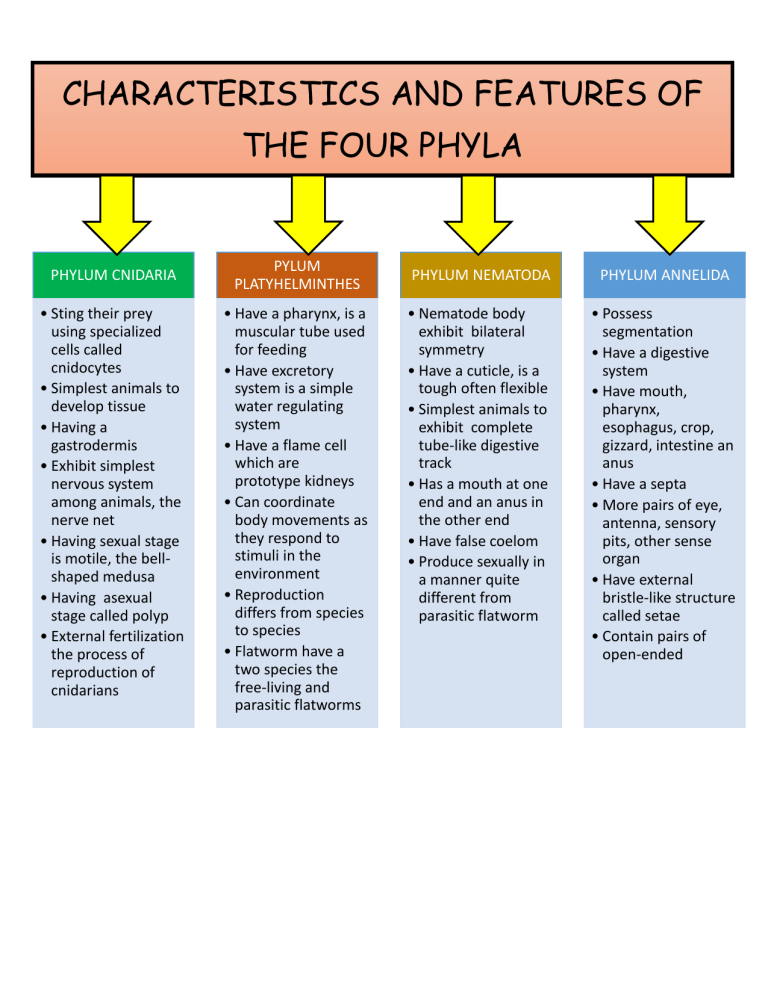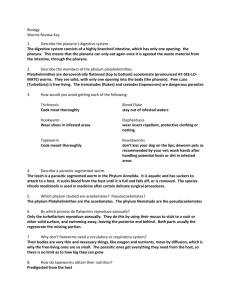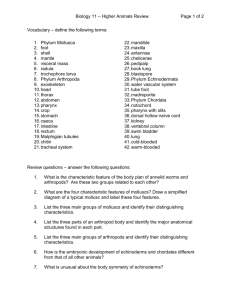Animal Phyla Characteristics: Cnidaria, Platyhelminthes, Nematoda, Annelida
advertisement

CHARACTERISTICS AND FEATURES OF THE FOUR PHYLA PHYLUM CNIDARIA PYLUM PLATYHELMINTHES • Sting their prey using specialized cells called cnidocytes • Simplest animals to develop tissue • Having a gastrodermis • Exhibit simplest nervous system among animals, the nerve net • Having sexual stage is motile, the bellshaped medusa • Having asexual stage called polyp • External fertilization the process of reproduction of cnidarians • Have a pharynx, is a muscular tube used for feeding • Have excretory system is a simple water regulating system • Have a flame cell which are prototype kidneys • Can coordinate body movements as they respond to stimuli in the environment • Reproduction differs from species to species • Flatworm have a two species the free-living and parasitic flatworms PHYLUM NEMATODA PHYLUM ANNELIDA • Nematode body exhibit bilateral symmetry • Have a cuticle, is a tough often flexible • Simplest animals to exhibit complete tube-like digestive track • Has a mouth at one end and an anus in the other end • Have false coelom • Produce sexually in a manner quite different from parasitic flatworm • Possess segmentation • Have a digestive system • Have mouth, pharynx, esophagus, crop, gizzard, intestine an anus • Have a septa • More pairs of eye, antenna, sensory pits, other sense organ • Have external bristle-like structure called setae • Contain pairs of open-ended

